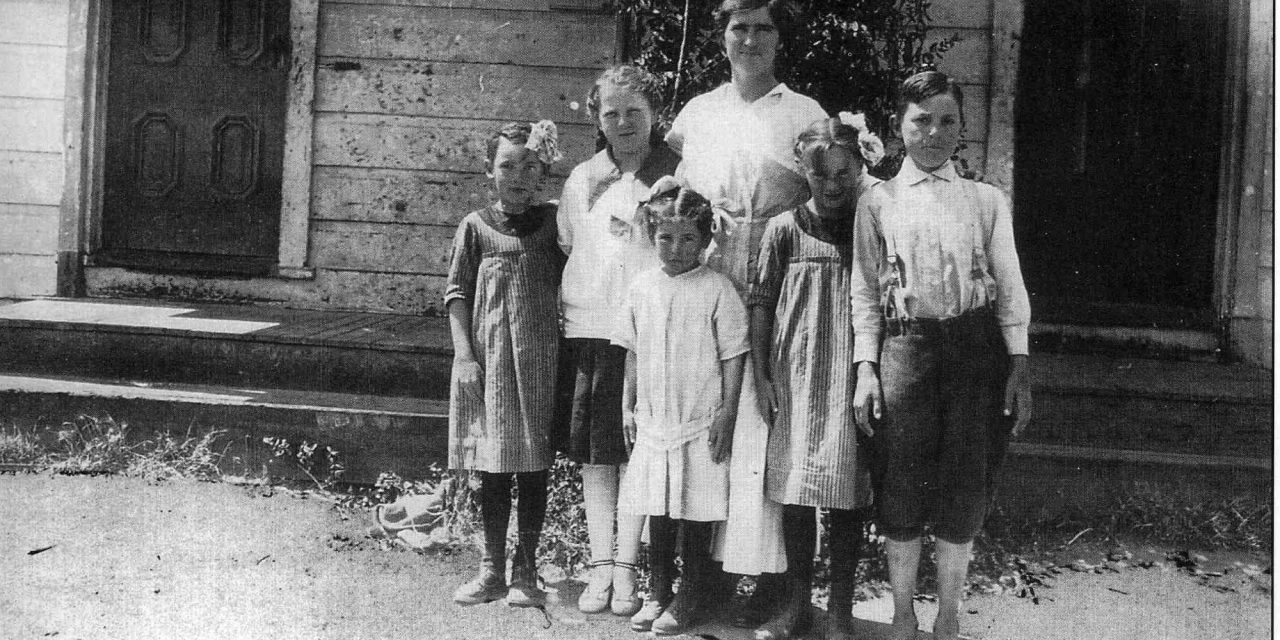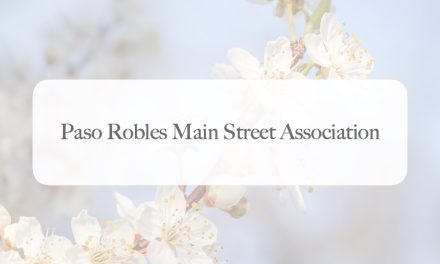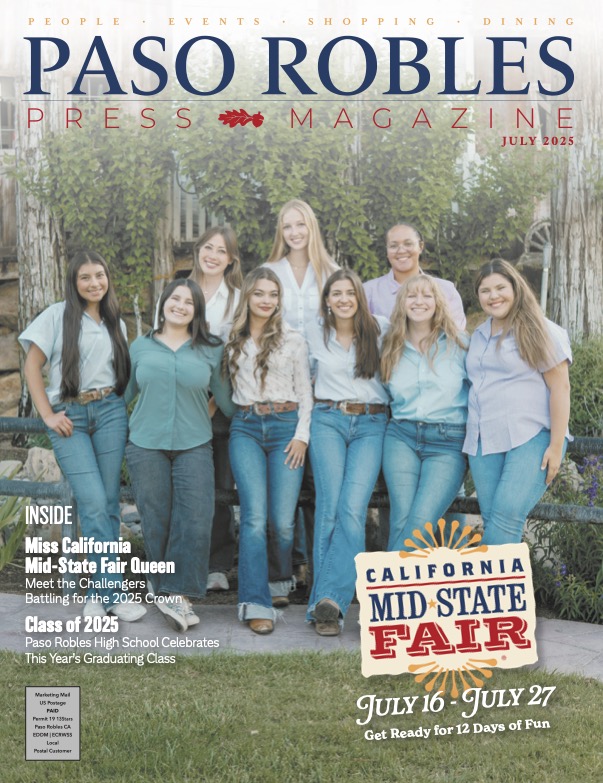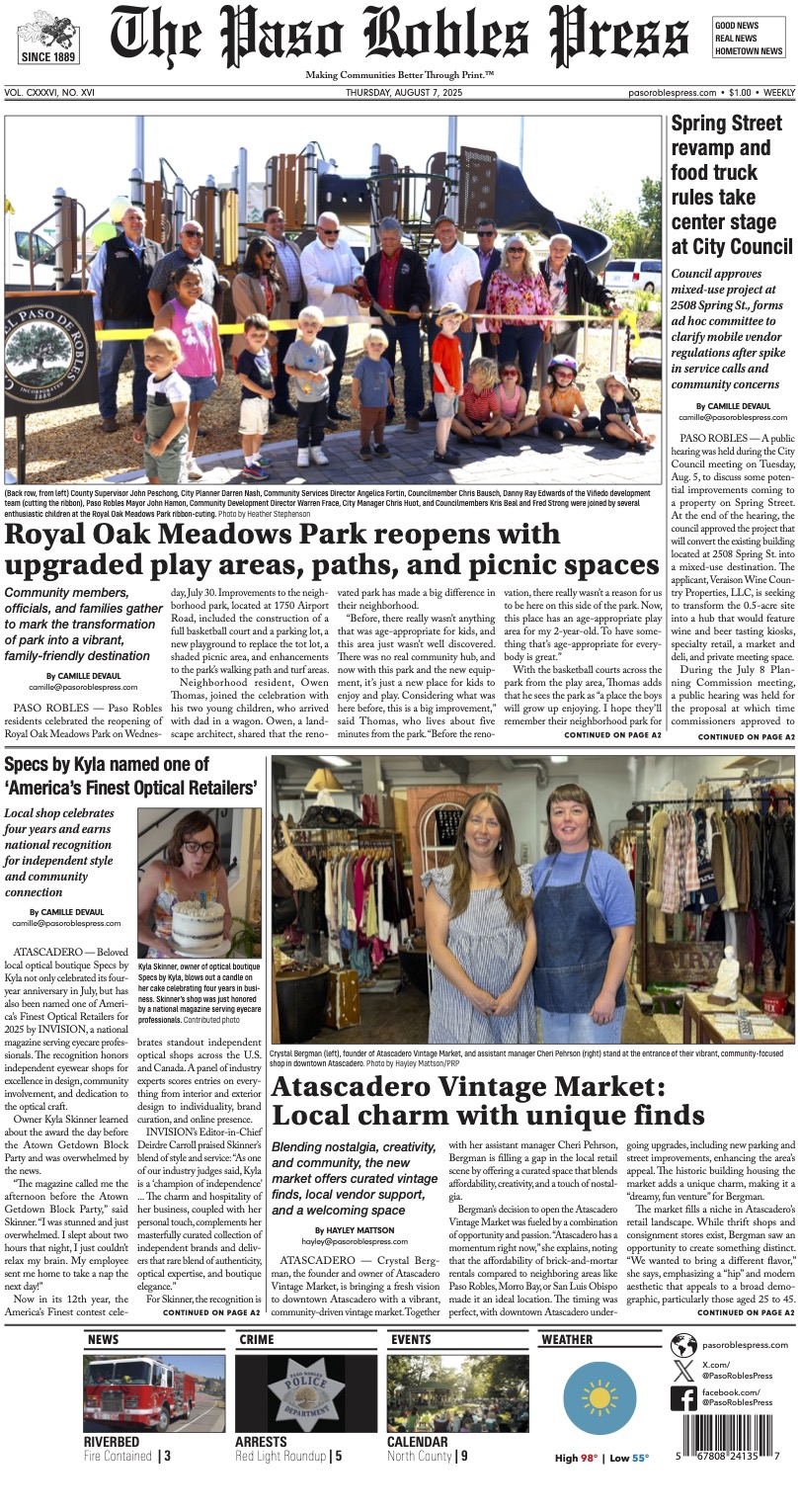By Camille DeVaul and the Paso Robles Area Historical Society
Across from the historic Estrella Adobe Church on Airport Road once stood a humble schoolhouse, where generations of children from the Estrella Plains gathered to learn. Though officially closed in 1934 and later consolidated into the Paso Robles School District, the Estrella School still carries a story — one marked by education, rural life, and a deadly shootout that left a lasting imprint, both historically and maybe even physically.
In July of 1885, as chronicled by Dorothy Lowe in an article in the Paso Robles Area Historical Society and Museum’s archives that references a San Luis Obispo Tribune article, the quiet grain fields surrounding the schoolhouse were disrupted by what would become a notorious confrontation. The incident began when schoolmaster Joe Sanders found himself the target of verbal abuse from nearby threshing crews. Tensions escalated as Sanders, humiliated and infuriated, rallied several friends — including DeWitt Brooks, Ed Stowell, and others — to confront the young laborers who had mocked him, many of whom were local boys like George and Henry Huston.
The morning of July 7, 1885, began with intentions of “frontier justice,” but quickly turned deadly. One of the threshers, 19-year-old Melvin Congdon, fired the first shot. Within moments, bullets flew in both directions. Twenty-five shots were fired in total. Two men — DeWitt Brooks and Ed Stowell — lay dead by the end. Henry Huston was seriously wounded but survived, carrying a bullet for the rest of his life. Several others were injured. The feud between the parties simmered for years, and several trials followed. Though two men were sent to Folsom State Prison, they were later pardoned.
As the Tribune’s editor reflected in the aftermath, the tragedy stood as a cautionary tale against “unrestrained passion” and youthful bravado turned violent.
But the story of the Estrella School doesn’t end in the 19th century. According to local resident and Paso Robles Area Historical Society member Grace Pucci, echoes of that violence might still be visible today — on her own garage in Paso Robles.
When Grace moved into her home on Vine Street, she was told a curious story. In the 1930s, when the Estrella School was being dismantled, the property’s former owner, Pliney Taylor, salvaged the lumber and reassembled it into a garage. Perched atop it is a cupola with a lightning rod — an architectural detail that may have once topped the old schoolhouse. Grace has since noticed what appear to be bullet holes in the siding, offering a haunting, tangible link to the infamous shootout.
The Estrella School lives on in more peaceful memories as well. According to the Pioneer Museum’s book “Readin’, Ritin’, and ‘Rithmetic,” student Crystal Iverson remembered eating lunch under the trees near the cemetery on hot days, a welcome respite offered by teachers who encouraged respect and quiet reflection.
Today, though the building itself no longer stands, the Estrella School’s legacy — of community, conflict, and endurance — remains a vivid chapter in the history of Paso Robles and the Estrella Plains.
PASO ROBLES PRESS MAGAZINE
Copies of Paso Robles Press Magazine are directly delivered to 23,000 readers in zip codes 93446, 93451, and 93465 and 2,000 dropped with support from advertisers and subscribers. Together, we are Making Communities Better Through Print.™
To subscribe or advertise, click here.













